In the SaaS market, you deal with a lot of competition.
Regardless of your company’s products or services, someone out there is aiming for the same customers as you are.
That’s why you should constantly provide value to your customers, and you can do that by adding new features.
However, only piling up functionalities in your product isn’t enough. You should ensure that customers adopt those features and make them a part of their everyday routine.
In this article, we’ll provide ways to increase feature adoption for your SaaS product.
Let’s get to it!
Announce New Features Across Multiple Channels
A lot of resources, research, effort, and time goes into creating every new feature for your product.
Software products can’t stay the same for too long, or the competition will overrun them with their innovations and increased usability.
Therefore, designing new features is non-negotiable. However, all that effort could go to waste if users aren’t aware of them.
Simply put, if they don’t know they’re there, they won’t adopt them.
That’s why you should promote new additions to your software on various channels.
For instance, you can use the power of social media. Spotify does that regularly when they roll out new features, like when they announced the lyrics feature on Facebook.

Source: Facebook
Social media can be a great outlet to announce your new features for a number of reasons.
One of them is that people who follow your company or product on social media are genuinely interested in it and want to receive news.
Also, you can be creative with your announcements. For example, Spotify, in the example above, used a short video that concisely explained the new feature and how to use it.
And while social media is an excellent channel for brief announcements like that, you can also use email for a more in-depth approach.
The team from the meditation app Waking Up announces new features with a detailed email.
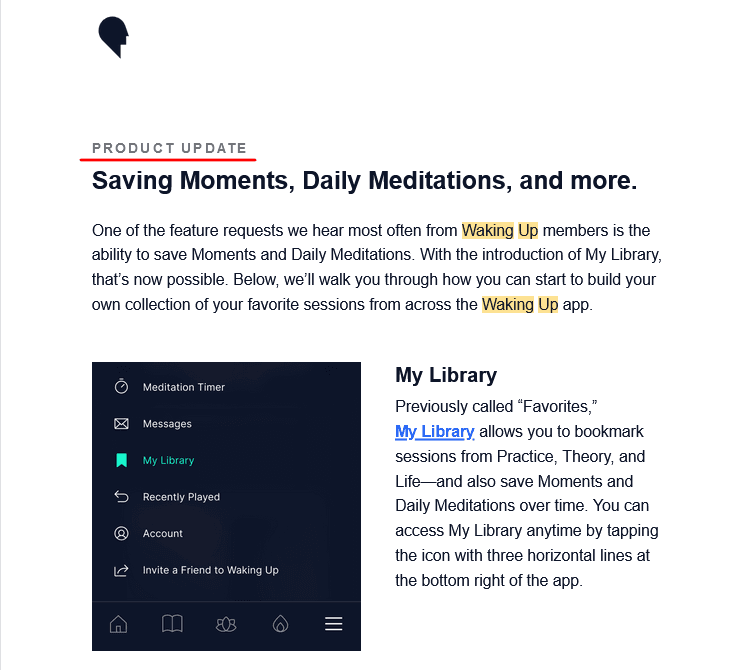
Source: Gmail
You can see a part of such an email above.
It contains more information about features than an announcement on social media usually has.
You can also opt for in-app announcements, like the one from Venmo you can see below.

Source: Appcues
Those announcements are hard to miss; users see them as soon as they open the app.
That makes them very useful for relaying information. Users don’t have a choice but to notice that there is a new feature in the product.
Among all the ways you can promote new features, there isn’t one that’s superior to the others. Each has its own place and its own advantages.
The important thing is that you use them because, without building awareness of your product features, adoption will not be as successful as you would like it to be.
Create an Effective Onboarding Program
It should go without saying that an onboarding process is one of the essential elements of your product’s success.
Teaching your customers how to use your product and find value in it can be vital for the future of your product.
And while most SaaS companies are well aware of the importance of onboarding, that process shouldn’t stop after the user is familiar with the basics of the product.
Software products change and evolve, but if users can’t keep up with that, they might look for other solutions.
That’s why onboarding should be a continuous process. When customers know how to find and use the product features, they will recognize their value and adopt them.
Also, good onboarding minimizes the chances of feature blindness:
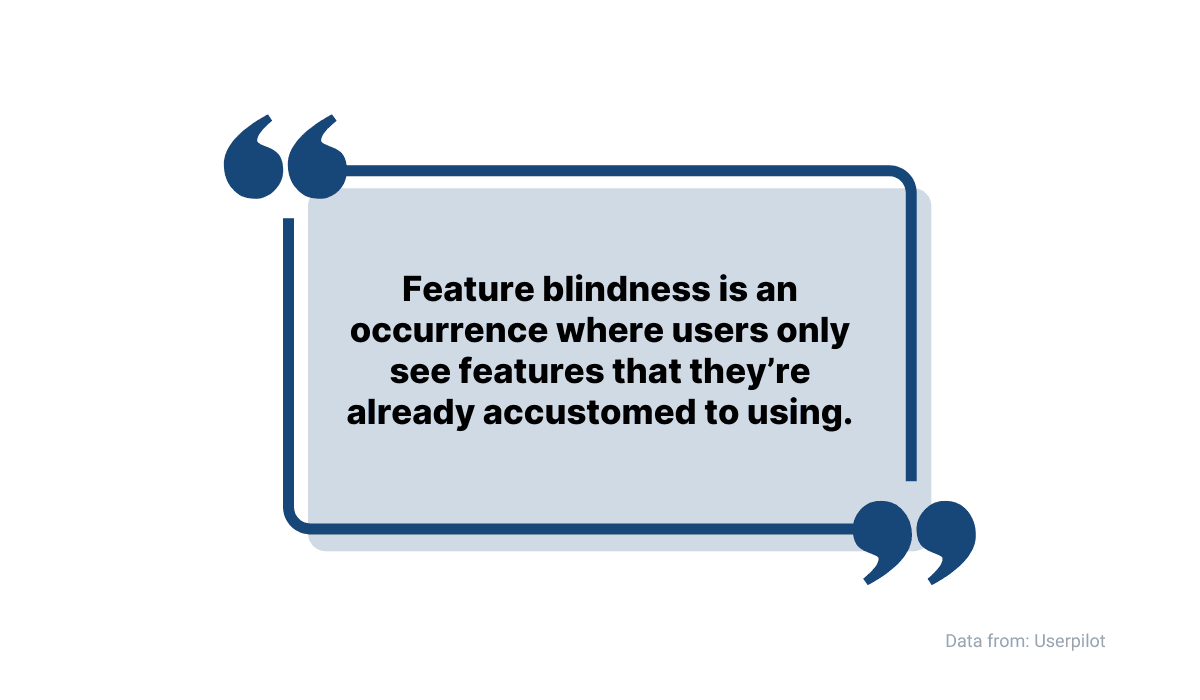
Source: Archbee
In other words, you should create guides for your new features and encourage customers to try them to open their eyes to new possibilities within your product.
There are several ways to create such a feature onboarding experience, but it comes down to concise, unintrusive contextual onboarding practices.
Keep in mind that the customers are already familiar with your product, and it’s the new features you need to introduce them to.
Pop-ups that don’t interrupt a user’s flow are a great way to present how new features work. Take a look at the example from Google Calendar below.
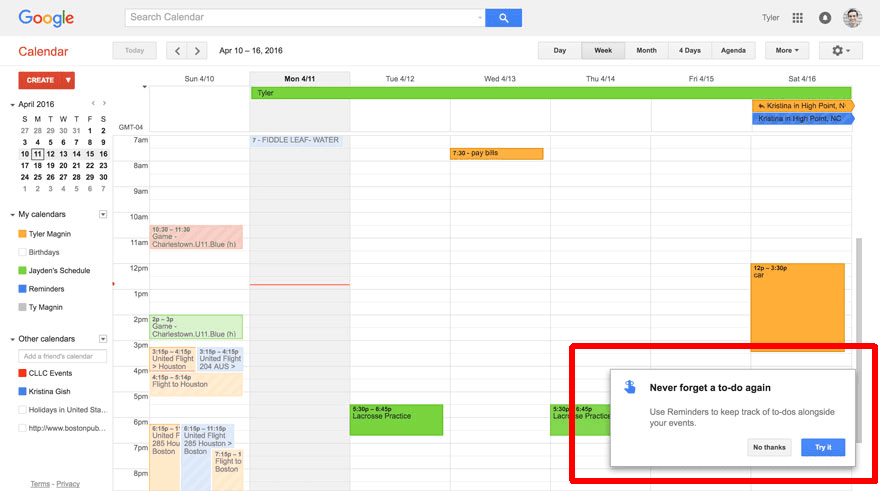
Source: Appcues
As you can see, a pop-up window appeared in the lower right corner with a brief message about Reminders, a new feature.
The users then have the option to take a walkthrough or skip it, allowing them to continue working and come to the onboarding process at their convenience.
Google also opted for a simple and effective approach in their Google Laboratory software.
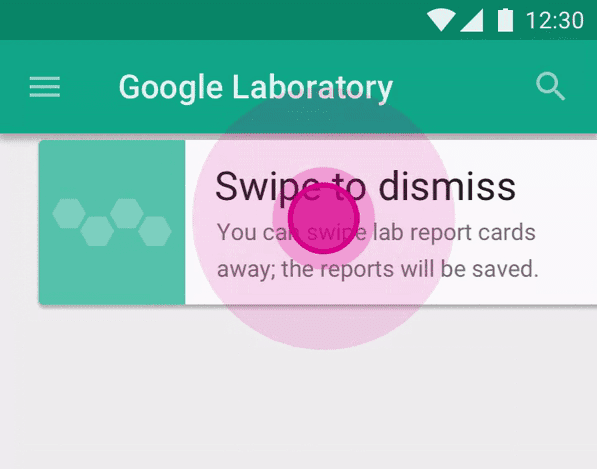
Source: Userpilot
They used a simple message that describes how to use the feature, accompanied by an animation of the swiping motion—clear, effective, and attention-grabbing.
Educating your customers about new features like that is crucial for adoption.
Of course, some customers will explore and learn on their own, but without onboarding, many will stick to what they know rather than experiment without guidance.
Have a Great Product Knowledge Base
It’s very likely that your customers will have questions about your product’s new features, as well as encounter problems that they want to solve.
A complex product like a piece of software changes over time, so providing your customers with helpful information and sources they can learn from is crucial.
And most customers like to have sources at their disposal that they can access and learn from on their own terms.
Of course, having a customer support team is important for those customers that prefer to get help from a live representative or need specific information that they have trouble finding themselves.
However, according to research from Harvard Business Review, 81% of customers across industries prefer to try to help themselves first before reaching out to support.
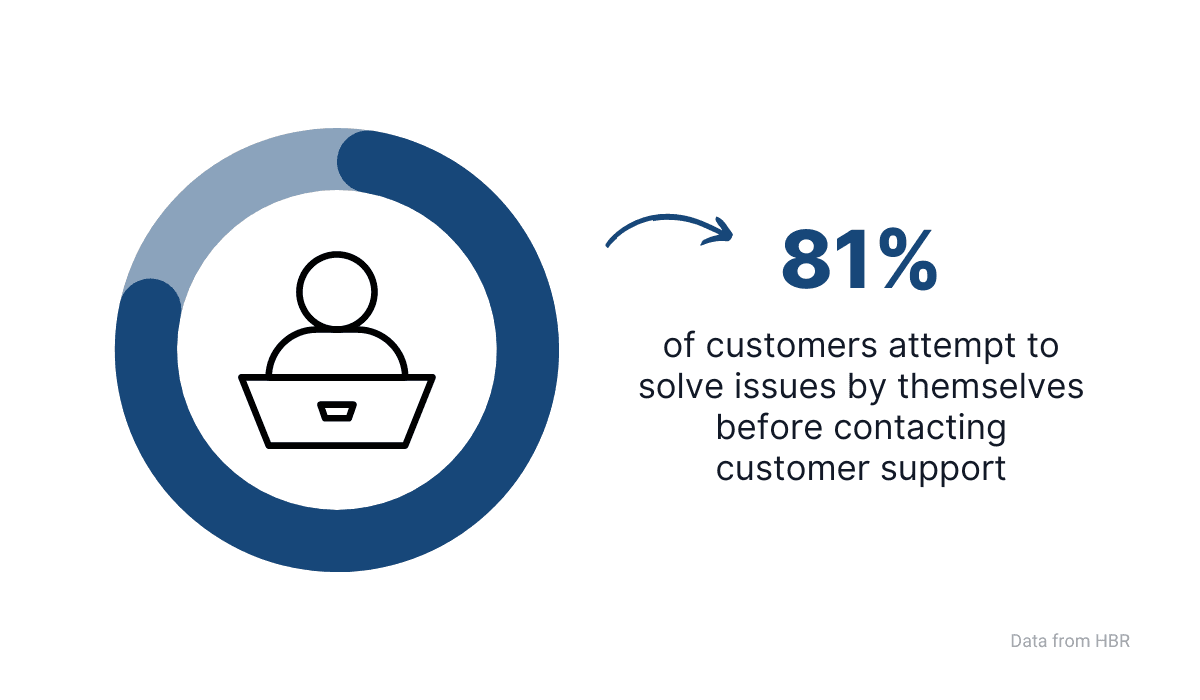
Source: Archbee
If you want to provide your customers with easily accessible and useful resources in one place, building a product knowledge base is a great solution.
A knowledge base can store all the information about the product and its features, making them easier for customers to adopt.
Also, you can have a dedicated section in the knowledge base precisely for presenting new features.
For instance, the digital analytics platform Amplitude has a section in its knowledge base devoted to interacting with its users. There, they announce their product’s new features.
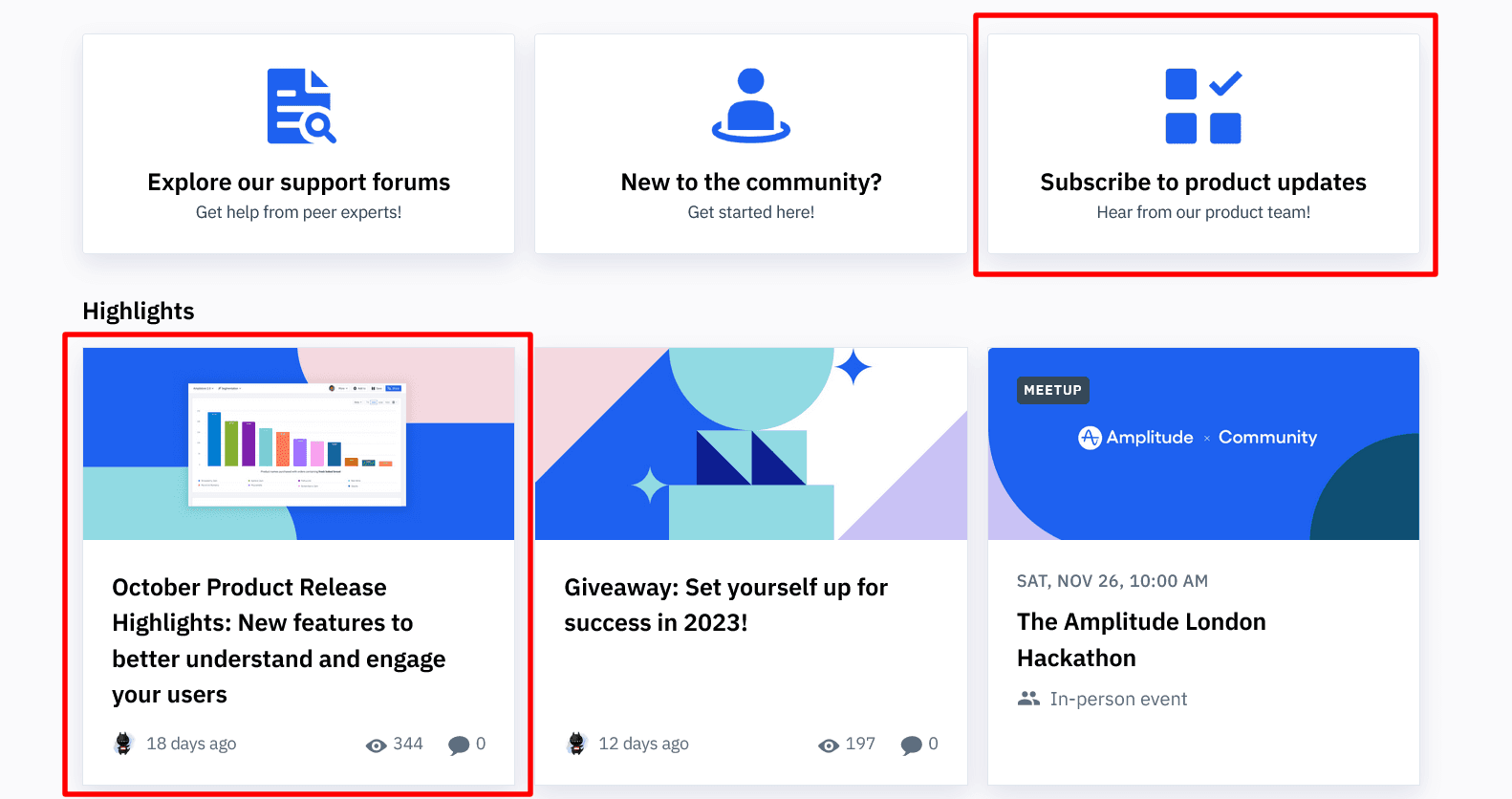
Source: Amplitude
As you can see above, they inform their customers about new features in a monthly roundup blog post.
In addition to that, they have a whole subsection with detailed announcements about product updates.
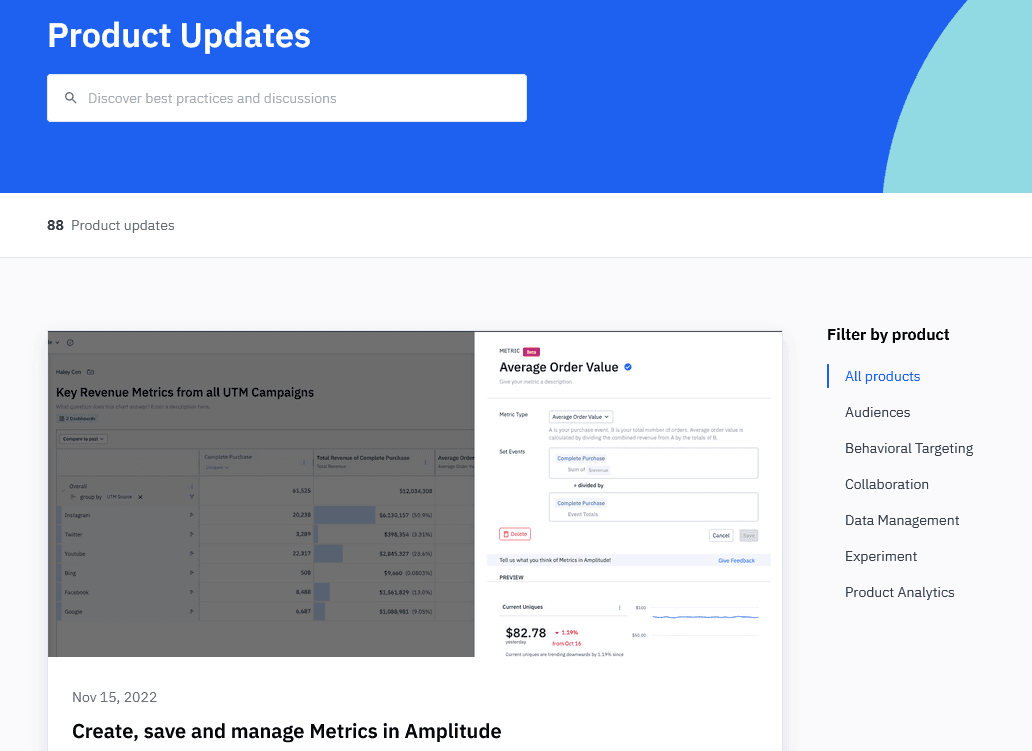
Source: Amplitude
That way, their users have all the information about new features, which makes it easier for them to stay in the loop and adopt those features at their convenience.
However, building a great knowledge base like that requires a great tool.
Archbee is a product documentation platform with all the features necessary to create a comprehensive resource for your customers.
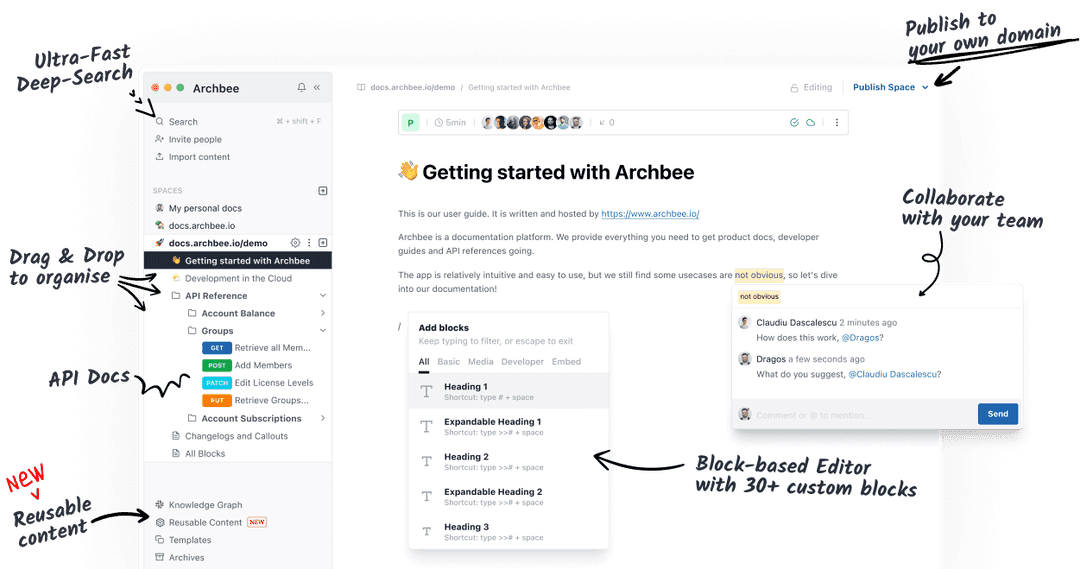
Source: Archbee
You can create product documentation, collaborate with your team on it, and publish it.
Also, when you update your product with new features, you can easily update the documentation, so your customers can have an updated and reliable resource.
A knowledge base is an excellent way to increase feature adoption. Your customers can get all the necessary information in one place, making the whole process easier for them.
Keep Track of Your Feature Adoption Rate
When you introduce a new feature to your product, tracking how well it’s received can be very valuable to you.
You should track your feature adoption rate to know which features are successful and which ones your consumers haven’t adopted as well as you’d hoped.
That can give you useful data about what your customers want and where your company should turn to.
To keep track of the feature adoption rate, you should first know how to calculate it. The formula is simple:
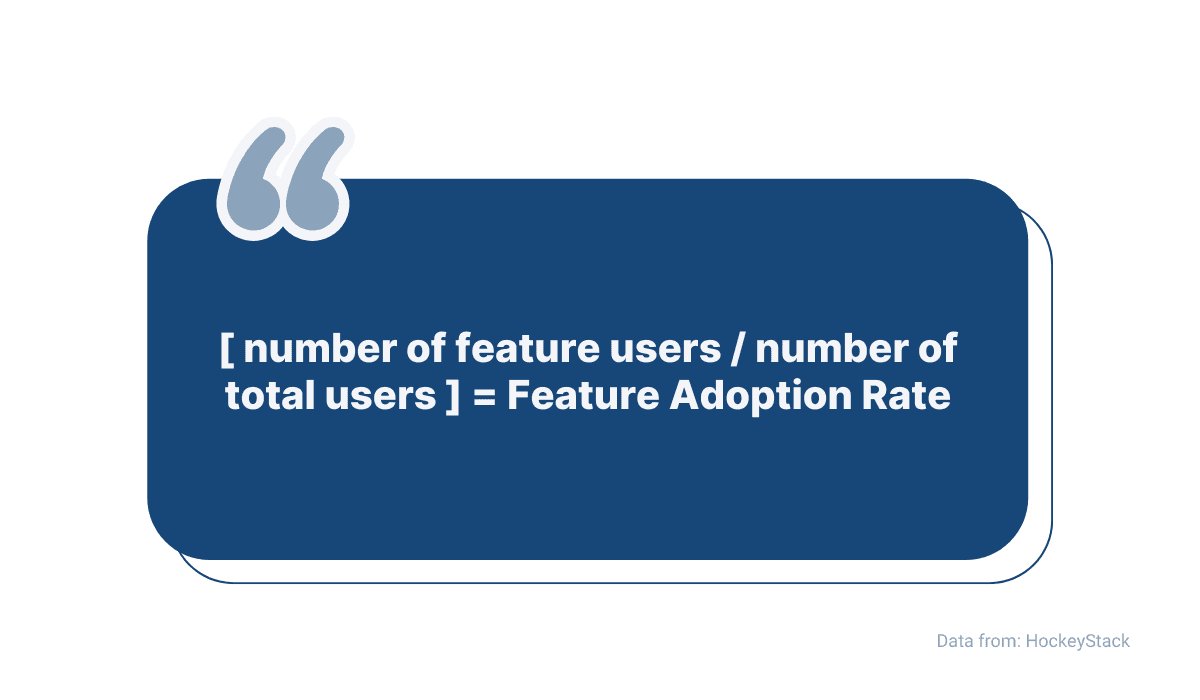
Source: Archbee
As you can see, you get your feature adoption rate by dividing the number of people engaged with the feature by the number of total customers.
Keep in mind that the key term here is engaged. In other words, those are the customers who use the feature regularly.
There are likely more of them who use it only once or twice, but those aren’t counted as adopters.
Of course, the higher the feature adoption rate, the better for your company and your product.
A high number means that there are a lot of customers who regularly use a specific feature, and that means they get value from it.
And customers who get value from a product won’t leave on a whim.
On the other hand, if the number is low, that data can also be useful for your future endeavors.
You can see which features are underperforming and make changes, so the customers get more value from them, and you minimize the chances of churn.
For keeping track of feature adoption rates and other valuable metrics, you can use a tool like Pendo.
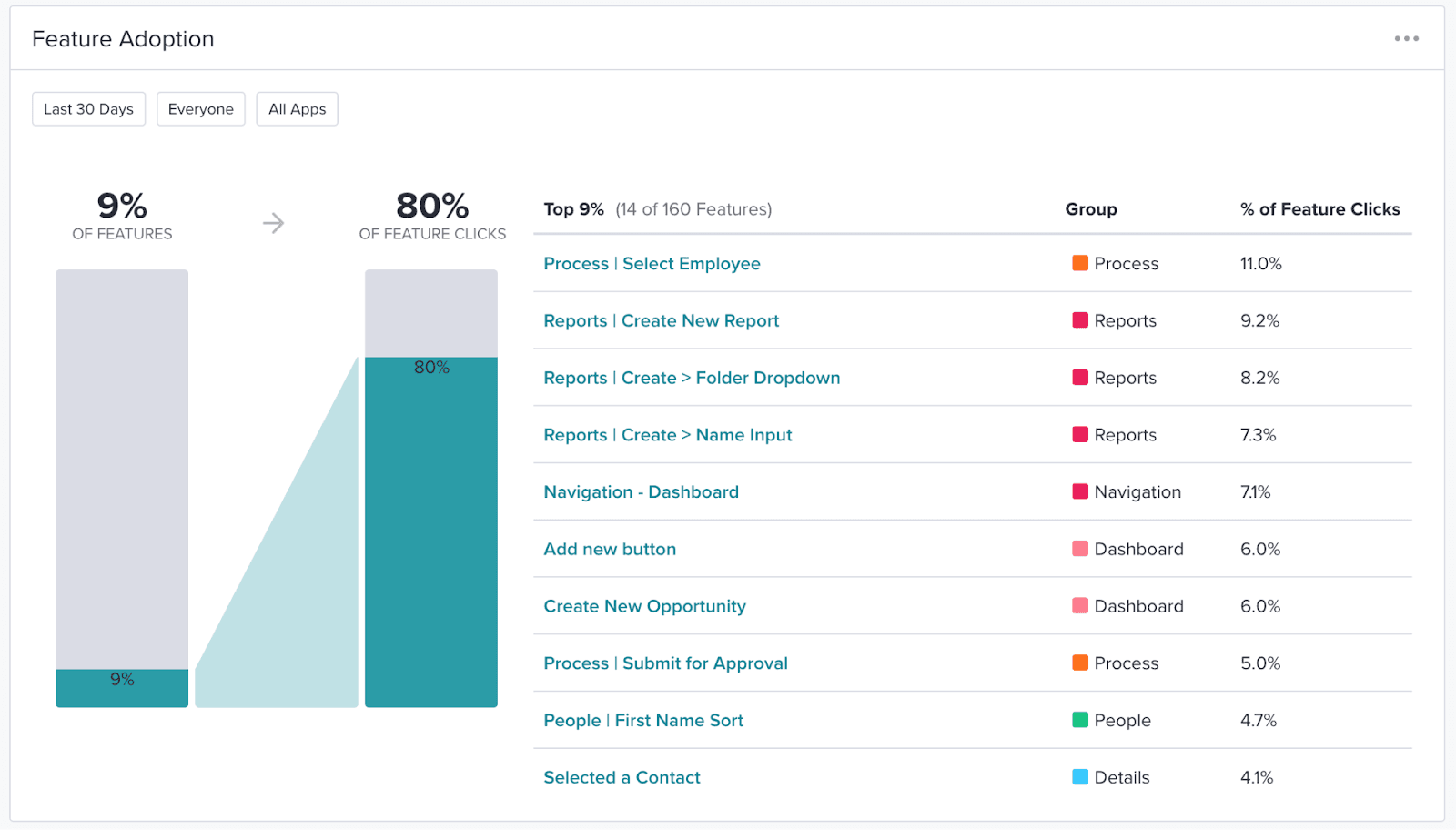
Source: Pendo
Pendo is an analytics tool that shows you which features your customers use the most and which are less important for them.
You can customize its findings by setting the date range, the customer segment, etc.
That can give you more precise information about the features your customers adopt the most and the least so you can take appropriate action to increase the adoption rate.
Improve Your Features by Asking for Feedback
As we discussed in the previous section, measuring feature adoption can give you insight into which features customers use regularly and which might have problems preventing better adoption.
However, that metric can’t precisely answer why some features underperform.
Asking your customers for feedback is one of the most direct and precise ways to identify where the issues lay and what to do to improve your features and their adoption.
Surveys are a fast and convenient way to gather that precious feedback.
However, different types of surveys provide different types of feedback.
For example, qualitative surveys ask customers to answer questions by typing the answers.
That way, you can get specific answers that can give you a great starting point for improving your features.
Take a look at the example from the Maze survey template:
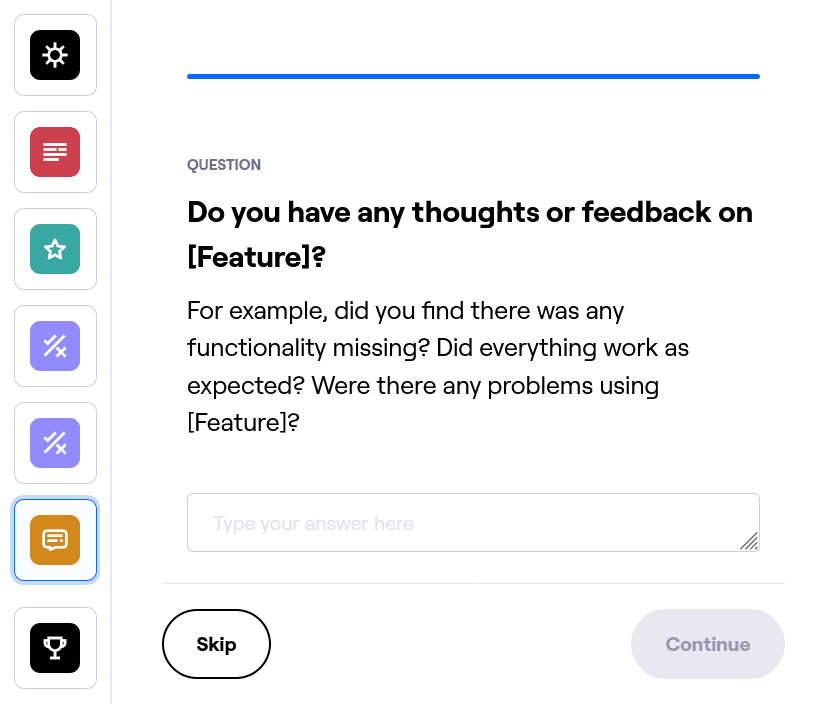
Source: Maze
As you can see, a customer needs to provide feedback by typing it in their own words.
Although that kind of feedback can be immensely valuable, some customers will skip giving it because of the effort and time they have to invest in thinking about the question, forming, and typing complete sentences.
On the other hand, quantitative surveys require much less customer effort and take just a few clicks to complete.
For example, a net promoter score (NPS) survey usually consists of one question and a scale from 1 to 10.
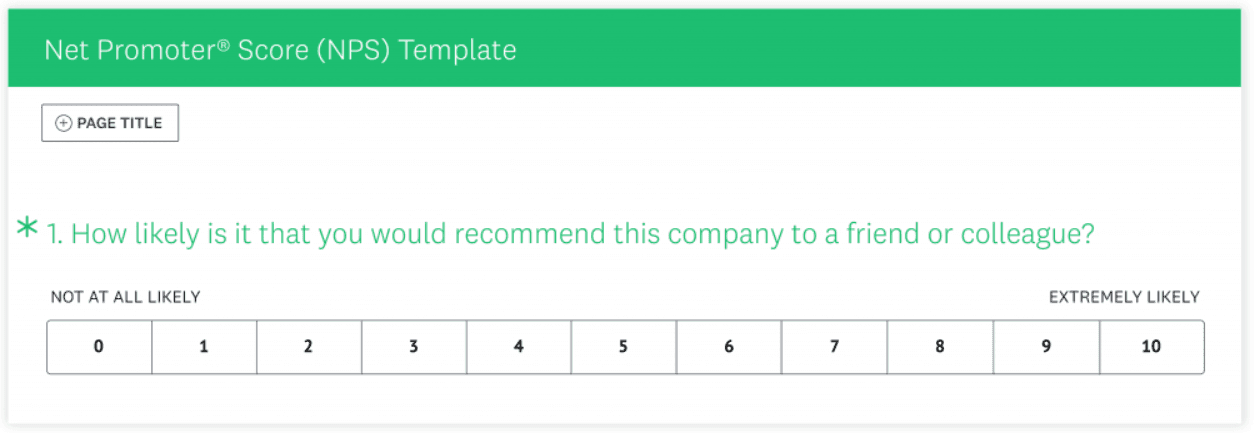
Source: Maze
The customers only need to click on the number that represents how likely they are to recommend the feature to a friend or colleague.
Although the feedback you get with quantitative surveys like NPS is less specific, it can also be very valuable for identifying the features of your product that need improvement.
You can also opt for a combined approach. Below you can see how Adobe did it.
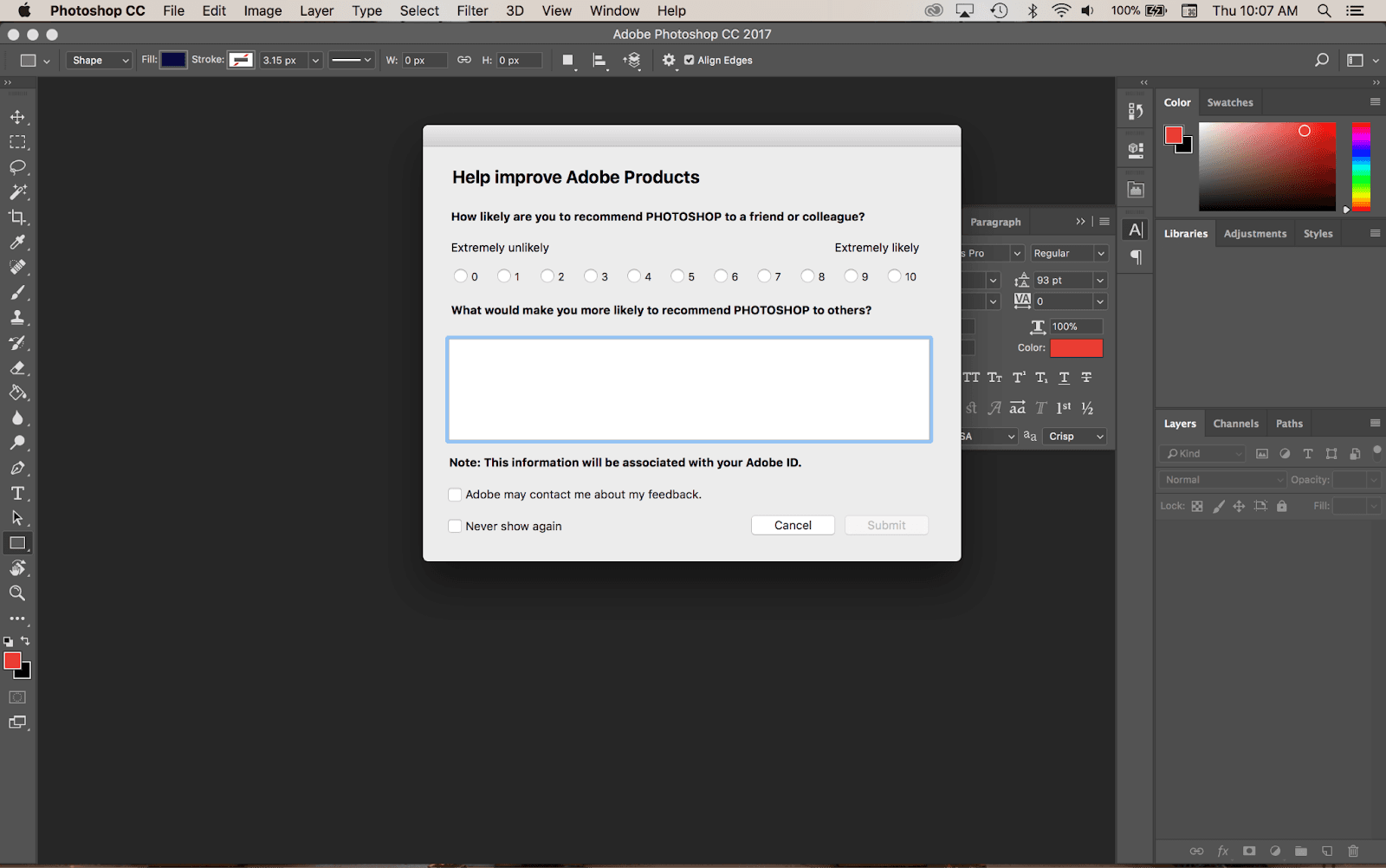
Source: GoodUX
As you can see, they combined the NPS and added a text field where the user can type their personal feedback.
To sum up, regardless of the type you ask for, the important part is what you do with it.
If you use it to improve your features, that will lead to better feature adoption. Don’t miss out on those benefits.
Conclusion
Feature adoption is crucial for the success of your SaaS product.
Think about it. If you regularly roll out new features for your product, but users keep ignoring them, your product is on a fast lane to obsolescence.
Customers need to have fresh features that they love to use, or they’ll go to one of your competitors, and you most certainly don’t want that.
We hope we’ve shown you that announcing new features, onboarding your customers, creating a knowledge base, keeping track of the adoption rate, and asking for feedback are practices worth your time and effort.
Use them, and you’ll soon see the desired results.
Frequently Asked Questions
Focus on awareness, education, and measurement. Announce new features across multiple channels (in-app messages, email, social, release notes) to build awareness. Provide continuous, contextual onboarding (tooltips, walkthroughs, checklists) so users see the benefit and know how to use the feature. Maintain a clear, searchable knowledge base with how‑tos and update notes for self‑serve learning. Track adoption and engagement (e.g., time-to-first-value, repeat usage) to see what’s working. Close the loop by gathering customer feedback and iterating on messaging, UX, and placement. Together, these steps reduce friction and help users make new features part of their routine.



